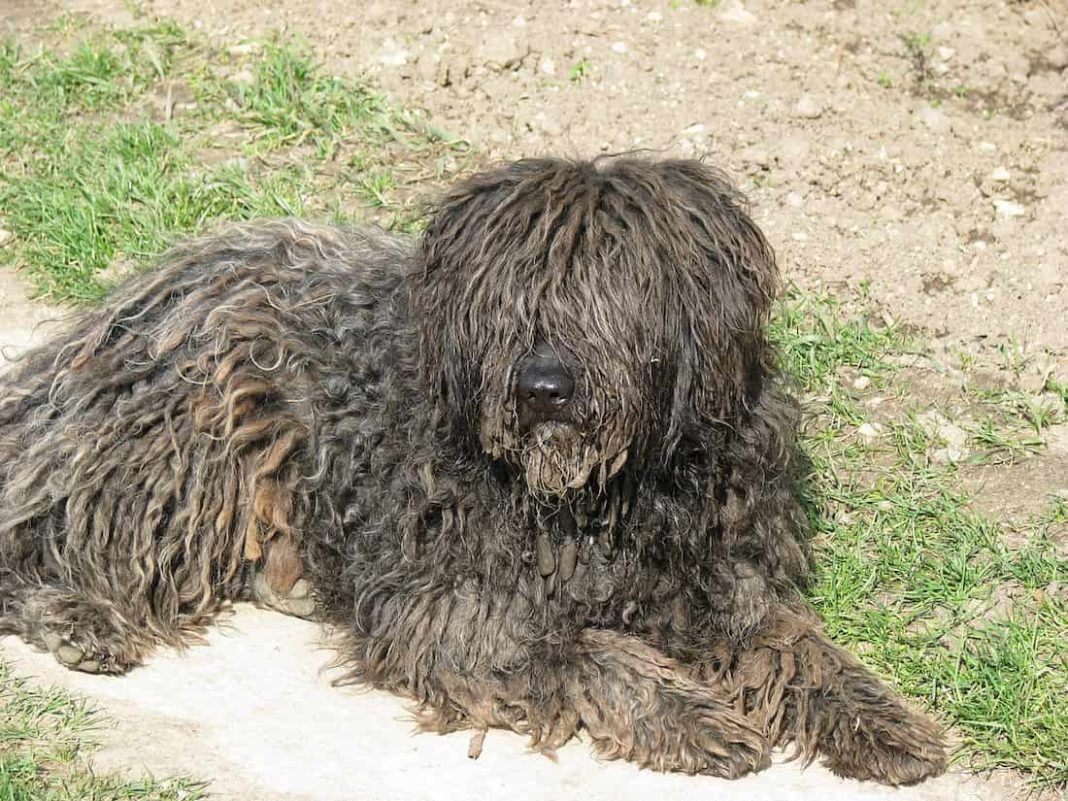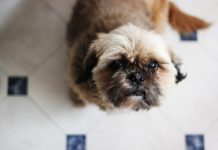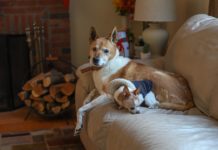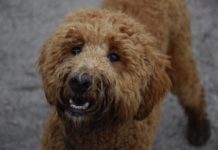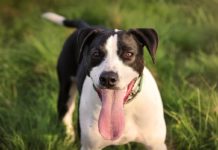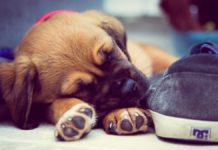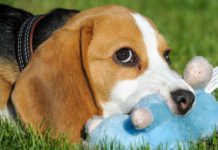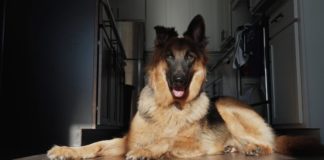Contents
Corded breeds have a soft undercoat and a harsher topcoat. As the coat grows, the topcoat hairs entwine with the undercoat, forming cords. Cords may be narrow and rope-like, oval and flattened at the ends or ribbon-like.
The cords insulate the dog from inclement weather while allowing air to circulate close to the skin between the cords, keeping the skin healthy and dry. Cords also function to protect livestock breeds from predator attacks.
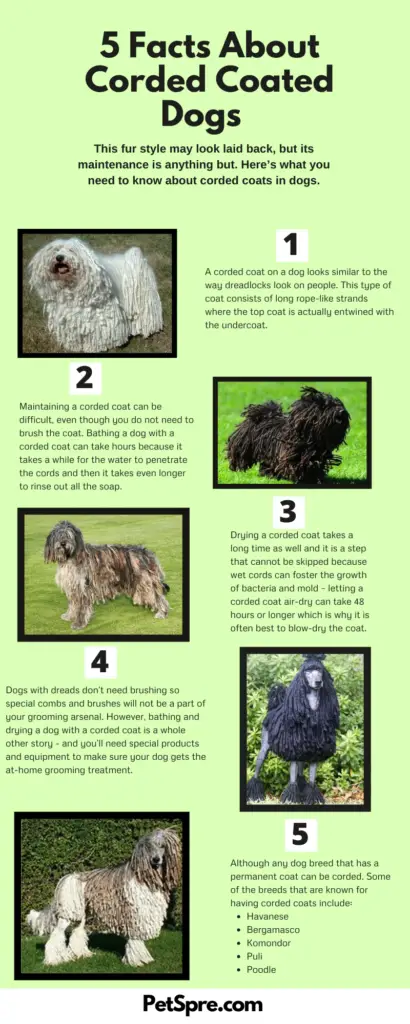
Cords are a distinguishing feature of the two Puli and Komondor Hungarian breeds. An Italian breed, the Bergamasco Sheepdog, has an interesting variation on the corded coat. It has three coat types: a dense and oily undercoat; coarse goat hairs; and the woolly topcoat that forms “maps” – long, flattened, fan-shaped mats of hair.
Poodles are a corded breed, although usually they are seen brushed out, clipped and scissored. Poodles may be exhibited with cords if they are styled in approved show clips. For pet purposes, any of the traditional corded breeds can be kept brushed out and clipped for convenience. Shorter, trimmed cords are also quite practical for both pets and performance dogs.
Not all dogs inherit an ideal coat for their breed. Always ask a groomer if your dog has a coat suitable for cording.
Brushing
Owners must decide whether to line-brush the fluffy puppy coat once a week or leave it to develop into naturally separating strands. When brushing longer hair (on the older puppy), use a gentle pin brush so the undercoat isn’t removed. If you decide not to brush out the puppy coat, then at least pick through the coat by hand, remove debris and stroke the dog so they aren’t stressed when their coat is being handled.
Young dogs must become accustomed to scissors, clippers and ear plucking. When plucking the ears, grasp the hair in the ear canal with a hemostat. Use a gentle, but quick, twist-and-pull motion and the ear hair should easily dislodge itself. Get an experienced groomer to show you the technique – it should only tickle the dog, and not hurt.
Cording the coat
Stop brushing the coat when the dog is approximately nine months.
The period of intensive cord formation can vary by breed and individual, but roughly between nine months and two years of age, grooming will be intensive. The adult undercoat will be growing in and the coat will look progressively spiked and tufted. Misting the coat with water will help to separate into strands.
Several times a week, inspect the chest, armpits, ears, chin, neck, tail and bottom. Once a week, go through the whole coat. If mats have occurred, split them into natural divisions down to the skin by hand. If they are too dense to separate by hand, start the split between each hair spike with a wee scissors snip, then split by hand down to the skin.
Prevention is the best approach. If the mats are too dense to split by hand, you are not checking the dog frequently enough! Do not make cord bases too small because mature, long cords can be heavy and the cord could break off. The base area should be an inch or more, depending on the breed and individual coat type.
Large matted areas may need further cutting to get started and the beginner should seek expert help so the dog is not cut accidentally. Be particularly careful splitting ear mats, so the ear flap is not torn.
Routine care for a mature corded coat is easy. As the coat grows out, continue separating the cords down to the skin by hand. Remove fluff from between the cords, and trim around the feet, between the pads and around the lip edge.
Hair too close to the lip-line is continually wet and dragged into the mouth while drinking and eating, so discreet trimming may eliminate this. Cords obscuring the vision, or in danger of being soiled with urine, can be loosely bundled out of the way with large fabric hairbands (not elastics, which can damage/rip cording). Make sure the bundled hair does not pull at the skin. Long cords that drag on the ground should be trimmed. Hair or cords should be trimmed or clipped from the genital area, upper insides of the hind legs and the anal area as necessary for good hygiene.
Bathing
Frequent bathing removes the natural coat oils and can cause tight brittle cords and dry skin. Cords will tighten after bathing, so do maintenance cord-splitting prior to the bath. Use the shower nozzle to wet the coat.
Never rub the cords – only squeeze the shampoo in until it foams. Then lift the washed cord layers over the back and work your way down the dog. Hairdresser clamps can be used to hold shorter cords out of the way temporarily.
Small to medium dogs can be submerged to the neck in a water-filled laundry tub (training will be necessary). Once they are wet through, the water can be drained and they can be shampooed.
Use a dilute mild shampoo in an old squeeze dishwashing bottle so the shampoo can be easily distributed on the cords. Rinse thoroughly with the shower nozzle (or several fresh laundry-tub soaks) and continually squeeze cords to check for traces of shampoo. Apply a final rinse of mink-oil conditioner to put a shine on the cords.
Squeeze the cords by hand. Then squeeze them with thin super-absorbent grooming towels. Remove the dog to the wire drying crate – its floor lined with thick towels (replace when wet) and use the dog dryer on the lowest temperature setting. Closed-sided plastic kennels get too warm and are not safe. Depending on the weather and cord type, dogs can take hours to dry with the dog dryer, or even days if no dryer is used. Once dry, recheck the cord bases in case minor splitting is needed.
Potential cord problems
Always be on the lookout for mould, foul smell caused by bacteria (warm humid seasons), urine soiling (males benefit from mini-baths using self-rinsing shampoo), external parasites and freezing (damp dogs should not go outdoors on windy chilly days).
Grooming tools
- Soft slicker brush (for puppy coats and short pet coats)
- Pin brush (for longer, older puppy coats)
- Small bristle brush (for tidying cord ends)
- Spray bottle for water
- Large fabric hair bands and clamps to gather cords
- Flexible shower nozzle
- Raised wire kennel
- Dog blow-dryer
- Hemostat (for plucking ear hair)
- Blunt toe scissors
- Clippers
- Scissors (for splitting mats)
- Mink-oil rinse/conditioner
- Thin super-absorbent grooming towels Thick crate towels

